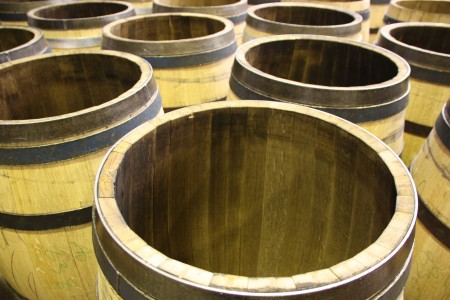
Are any two wine barrels the same? I’m talking about a new barrel separate of the wine. Just as winemaking is part art and part science, so is coopering. As with wine, barrels are going to be slightly different from year to year, and sometimes from barrel to barrel. The level of barrel variation you can live with probably depends on what you are trying to accomplish in your barrel trials.
Tom Collins, former Senior Manager for Research & Development at Treasury Wine Estates, conducted extensive barrel trials at the company from 2009 to 2012. Tom and his team set out to compare aromatic compounds (guaiacol, furfural, etc.) within a range of barrel options: toast, forest, grain type, seasoning, bending process. It quickly became clear that toast was the most important variable in these trials. The challenge was that toasting overshadowed the other variables (grain tightness, etc.), and because barrels were often not identical in their toasting, it was difficult to isolate anything else.
Of course toast isn’t the only variable to challenge us in barrel trials. With the barrel itself, there is variation from tree to tree, and differences in weather patterns from year to year could affect seasoning. The wine itself is never the same each year. In a hotter vintage, you get wines with higher alcohol. And higher alcohol levels will extract more aromatic compounds and tannins from the barrel (see post on alcohol levels).
But winemakers tend to stick with cooperages they feel are more consistent. And winemakers often evaluate barrels based on taste alone, not numbers. A barrel trial must be frustrating for someone like Tom Collins, a researcher who is trying to isolate variables and record measurements of these aromatic compounds.
After hearing about Tom’s trials at Treasury, I had a couple of key takeaways:
1) Toasting is the most important variable in a barrel trial.
2) Toasting should be the most significant factor in distinguishing one cooperage from another and determining a cooper’s “style.”
Perhaps winemakers would find it beneficial to prioritize toasting over other variables in trials and not try out too many things at once.
Also, I wonder if it might be helpful to use longer seasoned wood in trials where one would like to focus on variables other than toasting. Since toast tends to be more subtle with longer seasoned wood (see post on seasoning), using barrels seasoned three years or longer might allow other variables to shine through. Alternatively, you can use untoasted wood. But who would want to do that?
